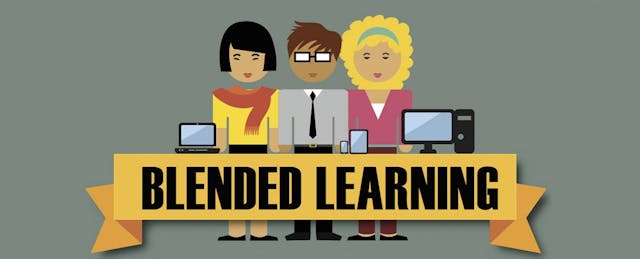Let’s face it, implementing blended learning is complex. Each of the steps can be challenging, whether it’s shifting to personalization, integrating technology, or embracing competency-based learning. If you’re not crystal clear about why your school or district is embracing blended learning, you’ll likely have a hard time building support among your key audiences.
It takes some time to craft a message that elicits engagement, trust and credibility, but you can start with a core message that’s easy and quick to deliver. This kind of “elevator pitch” can help you set the stage in the same way that entrepreneurs concisely deliver an otherwise complex business plan.
Once you’ve built your core message, add in the specific reasons for why you are implementing blended learning and be ready to explain its benefits to each audience (teachers, students, administrative staff, parents and community members). Poor communications can lead to unmanageable expectations, confusion, and opposition to innovation, so now’s the time to start building your blended learning key messages.
What is the first thing you say when asked 'Why blended learning?'
Articulating a clear message that captures the main reason behind your blended learning program is enormously helpful. Beyond that, it’s important to consistently and explicitly link your blended learning program to your student learning goals and other educational objectives. In other words, remember to talk about the teaching and learning, not just the technology.
The following are three sample messages about blended learning that you can use to start developing your own elevator pitch:
- The world our children face is rapidly changing, requiring new skills and preparation to be ready for college, career, and citizenship. Blended learning provides teachers with tools to personalize learning for our students, increasing their engagement, growth and achievement.
- All students deserve an education that prepares them for college, career and global citizenship. Our school district is committed to using blended learning to provide teachers and students with the tools to reach their full potential and succeed in the 21st century. Direct delivery of personalized instruction means each student learns what they need to, when they need to, and masters skills for future success.
- There are exciting shifts occurring in schools across America, as educators respond to the challenges and opportunities our children face in the 21st century. Our school district is providing teachers and students with powerful new tools and training that enable personalized, student-centered learning by blending the best of face-to-face instruction with new technology. The whole universe of knowledge is now open to our students and our teachers will help prepare them to be lifelong learners.
'Are you talking to me?' Tailoring blended learning messages to your audience
Understanding your audience when you are speaking about blended learning is critical. For example, discussing the details of differentiated instruction may inspire educators, but it might leave parents with their eyes glazing over. On the other hand, singing the praises of 24/7 access to learning may inspire parents, but not resonate with the broader community. Segmenting your blended learning messages by audience will ensure the information you are sharing is the most compelling.
When communicating with teachers, stress the power of technology to personalize learning for each student. Teachers should no longer have to teach to the middle but can reach every student effectively. Real-time data and instant feedback on student progress allow teachers to intervene quickly to ensure a student is mastering a concept, or not.
Teachers can use technology to decrease time-consuming, administrative work, and increase high-impact, direct instruction with students. In a blended learning classroom, teachers can use technology to access learning tools from around the world, increasing knowledge sharing, communications, and global perspectives for students and teachers alike.
When communicating with parents, highlight that technology provides real-time information about their student’s progress and allows teachers and parents to intervene when necessary.
In blended learning classroom, students and their parents have access to learning 24/7, and can share in skill-building. Children of all abilities and socio-economic levels get the customized support they need and deserve with blended learning, increasing levels of student engagement and success.Students build the types of technical skills that are increasingly necessary for college and career-readiness and learning these skills at school helps address the digital divide.
Reaching out to the broader community should include the argument that high-quality blended learning ensures that students will no longer “fall through the cracks” and graduate without key knowledge and marketable skills. Also, stress that colleges and corporate leaders demand that graduates have 21st century skills to succeed in the global workplace. Blended learning helps build skills in using technology, but it also enhances communications, team-building, creativity, and problem-solving --all important for developing citizens who are prepared to contribute in the workforce and succeed in higher education.
Communications is a cornerstone of good blended learning implementation. Take the time to tailor your messages to each of your audiences - it’s a smart step towards success. Click here for more sample messages about blended learning that you can use to start developing your own message bank. And of course, if you’ve already found a message that resonates, do share!


